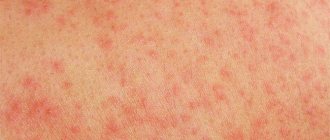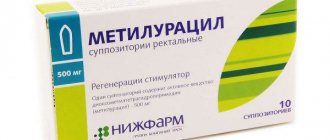Compound
1 g of liniment or ointment contains 0.25 mg of active ingredient.
The auxiliary ingredients in liniment include:
- propylene glycol;
- anhydrous lanolin ;
- petrolatum;
- pentanol;
- stearic acid;
- nipagin;
- nipazole;
- purified water.
Excipients in the ointment:
- benzyl alcohol;
- propylene glycol;
- soft white paraffin;
- ceresin;
- lanolin.
Dosage form, composition
The active component of the drug is fluocinolone acetonide. Sinaflan is available in several forms for external use:
- liniment: yellowish viscous substance containing 0.25 mg of active substance per 1 g;
- gel: transparent yellow mass with similar content of fluocinolone acetonide;
- cream: a homogeneous oily substance.
Among the form-building compounds and stabilizers of the product: glycerin, paraffin, liquid paraffin, lanolin, ceresin, propylene glycol, purified water and other components.
All dosage forms of the drug are packaged in 10 or 15 ml tubes and cardboard boxes, equipped with instructions for its use.
Pharmacodynamics and pharmacokinetics
Pharmacodynamics
You can often hear the question of whether Sinaflan is hormonal or not. This is a hormonal drug, but this is the reason for its high effectiveness.
Fluocinolone acetonide binds to specific receptors in the cytoplasm of cells, which provokes an increase in mRNA synthesis. The result of exposure affects all metabolic processes in the cell.
Clinically significant effects include the following aspects of influence on the cell:
- inducing the synthesis of lipocort proteins, including lipomodulin, which leads to inhibition of the activity of phospholipase A2, which is one of the factors in the progression of the inflammatory response;
- stabilizes the cell membrane, which helps prevent swelling ;
- increases the rate of protein catabolism;
- reduces the migration of B and T lymphocytes and disrupts the interaction of these cells;
- inhibits the accumulation of leukocytes and macrophages at the site of inflammation;
- suppresses the effect of hyaluronidase, reduces the level of formation of arachidonic acid and leukotrienes;
- affects the regulation of carbohydrate metabolism, reducing tissue glucose consumption, which can lead to an increase in its concentration in the blood ;
- promotes the retention of sodium and water ions, provokes the excretion of potassium and calcium, reduces the ability to absorb calcium;
- increases the synthesis of erythrypoietins.
This effect on metabolic processes in the cell contributes to a noticeable effect in those cases for which the medicine is used - for acne and other inflammatory skin lesions.
Pharmacokinetics
Fluocinolone acetonide easily penetrates into all layers of the skin, but accumulates in the stratum corneum (can be detected even 15 days after completion of treatment). It enters the bloodstream in small quantities.
Biotransformation occurs in the liver. In this case, inactive metabolites . Excretion occurs mainly due to the work of the kidneys.
Absorption of the drug occurs more intensely when treating children, when applied to large areas of skin, when used regularly, when applied to the face or damaged skin.
What is Sinaflan intended for?
The drug reduces the manifestation of inflammatory reactions of the skin during autoimmune processes, exposure to toxins, biological and chemical allergens. Fluocinolone binds to cell cytoplasms, inhibits the production of the enzyme phospholipase A2, which provokes negative symptoms of irritation. As a result of using Sinaflan:
- the concentration of leukocytes and macrophages in the area of inflammation decreases;
- fluid outflow improves;
- metabolic processes inside cells are normalized: absorption of glucose, potassium, calcium, sodium ions;
- the production of arachidonic acid, one of the provocateurs of inflammation, is regulated.
Sinaflan inhibits the activity of cellular immunity: it reduces the accumulation of T-lymphocytes, thereby eliminating the factors of allergic manifestations. The substances of the drug act quickly directly at the sites of application, so the ointment has proven itself to be the best in the treatment of rashes and other superficial formations on the skin.
Fluocinolone easily penetrates into the stratum corneum, accumulates in them as therapy continues and persists for up to 15–20 days from the moment the application is stopped, providing a therapeutic effect. The components of the drug penetrate into the systemic bloodstream in minute concentrations, which are not hazardous to health. They are transformed in the liver and are completely eliminated from the body.
Indications for use
Why use Sinaflan ointment and dosage forms of the drug? For the treatment of various inflammatory skin lesions of non-infectious etiology.
What does Sinaflan ointment help with in most cases? You can list the following indications for the use of ointment, gel, cream and liniment:
- eczema of various localizations;
- psoriasis of the body and scalp;
- atopic dermatitis;
- seborrheic lesions;
- lichen planus ;
- itching of the skin of unknown etiology;
- discoid form of lupus erythematosus ;
- allergic rashes;
- erythema multiforme ;
- minor burns ;
- neurodermatitis;
- inflammation at the site of an insect bite.
Contraindications
It is prohibited to use ointment or liniment in such cases;
- hypersensitivity to the active substance or auxiliary components of the drug;
- skin diseases caused by an infectious agent: bacteria, virus or fungus;
- lupus;
- skin lesions that are a manifestation of syphilis ;
- wound surface;
- diaper rash;
- precancerous skin conditions, tumors ;
- the presence of a nevus on the area of skin where the medicine should be applied;
- psoriasis that has progressed to plaque formation;
- acne (the use of Sinaflan for acne, which is actually acne, can cause an exacerbation of the disease);
- trophic ulcers on the lower extremities caused by varicose veins;
- any use for children under 2 years of age;
- use in ophthalmology and on the skin of the mammary glands is prohibited;
- pregnancy and lactation .
Side effects
The question of whether an ointment is hormonal or not is often due to the fact that it is known that hormonal drugs actively affect the entire body. This also applies to Sinaflan. Side effects are not very common, but they can be quite varied.
On the part of the skin and subcutaneous fatty tissue, the following may appear:
- hives;
- allergic contact dermatitis;
- skin irritation;
- peeling of the skin or rashes in the form of papules or spots at the site of application of the medicine;
- hyperkeratosis;
- furunculosis;
- exacerbations of pathological skin conditions that were present at the start of treatment;
- atrophic changes in the skin;
- burning sensation;
- itching;
- steroid acne ;
- folliculitis;
- hair loss or excessive growth in the area where Sinaflan was applied;
- pigmentation disorders.
From the digestive system (occurs when used on large areas of the skin):
- gastritis;
- steroid gastric ulcer .
From the endocrine organs:
- increased blood glucose levels;
- glucosuria;
- in children – slower growth and development;
- when applied to large areas of skin, the development of adrenal insufficiency , Itsenko-Cushing syndrome , and steroid diabetes mellitus .
From the immune :
- allergic reactions;
- hypersensitivity reactions;
- decreased immunity ;
- exacerbation of chronic diseases;
- generalization of infectious lesions;
- slowing down repair processes.
From the heart and blood vessels:
- increased blood pressure ;
- swelling.
When applied to the outer surface of the eyelids, there is a risk of developing cataracts and glaucoma .
Possible adverse reactions
When using the drug Sinaflan, the following are rarely possible:
- increased itching, flaking, dry skin;
- the appearance of keratosis;
- swelling, redness, burning.
With long-term use, there are isolated cases of impaired carbohydrate metabolism, increased blood pressure, and decreased immunity. The risk of side effects is higher when Sinaflan is combined with other hormonal ointments or when taking systemic glucocorticoid drugs.
Instructions for use of Sinaflan (Method and dosage)
Sinaflan ointment, instructions for use
The ointment is applied to the affected area 1 or 2 times a day and lightly rubbed in. The course of treatment for adults is up to 10 days, for children – no more than 5 days, for facial skin – no more than 1 day.
It is not advisable to use ointment under a bandage, with the exception of some forms of psoriasis . But in this case, it is very important to change it regularly.
The drug in the form of an ointment is recommended for use in dry forms of dermatoses .
Liniment Sinaflan, instructions for use
Liniment can be applied 2-4 times a day. The course of treatment is the same in duration as when using the ointment.
Do not use under a closed bandage, but can be applied to a small area of skin under an occlusive one.
It is advisable to use for dry dermatoses .
How to use Sinaflan cream or gel
Apply to affected areas 1-4 times a day. The course lasts no more than 2 weeks.
The cream is more often used for wet dermatoses , and the gel is used for lesions of the scalp.
Sinaflan-Akrikhin ointment (tube 0.025% 15g)
A country
Russia
The country of production may vary depending on the batch of goods. Please check with the operator for detailed information when confirming your order.
Compound
Tube 15 g
Fluocinolone acetonide in terms of 100% substance - 0.025 g per 100 g. Excipients: propylene glycol 4.975 g, petroleum jelly 80 g, lanolin 5 g, paraffin paraffin 10 g.
pharmachologic effect
Pharmacodynamics The active component of Sinaflan-Akrikhin, fluocinolone acetonide, is a glucocorticosteroid for external use.
When exposed to the skin, the drug inhibits the release of inflammatory mediators and also prevents the marginal accumulation of neutrophils, as a result of which the inflammatory exudate and the production of cytokines are reduced, the migration of macrophages is delayed, and the process of infiltration and granulation is reduced. Sinaflan-Akrikhin has anti-inflammatory and antiallergic effects. Pharmacokinetics After absorption from the skin surface, fluocinolone acetonide binds to plasma proteins. The substance is metabolized in the liver, resulting in the formation of metabolites that do not have pharmacological activity. It is excreted primarily by the kidneys.
Indications for use
Inflammatory and allergic skin diseases of non-microbial etiology: eczema, atopic dermatitis, simple chronic lichen (limited neurodermatitis), itching, psoriasis and other chronic diseases accompanied by dry skin.
Side effects
Burning, itching, steroid acne, stretch marks, dry skin, folliculitis. With long-term use, skin atrophy, local hirsutism, hypertrichosis, telangiectasia, purpura, skin pigmentation disorders, alopecia, especially in women, secondary immunodeficiency (exacerbation of chronic infectious diseases, generalization of the infectious process, development of opportunistic infections); when applied to large surfaces, systemic manifestations are possible (gastritis, “steroid” gastric ulcer, adrenal insufficiency, Itsenko-Cushing syndrome, “steroid” diabetes mellitus, slowdown of reparative processes).
Contraindications
Hypersensitivity, skin manifestations - syphilis, skin tuberculosis, diaper rash, rosacea, extensive psoriatic plaques, anogenital itching; skin infections caused by bacteria, viruses, fungi - pyoderma, chickenpox, Herpes, actinomycosis, blastomycosis, sporotrichosis, trophic leg ulcers associated with varicose veins, erosive and ulcerative lesions of the gastrointestinal tract, ulcers and wounds at application sites , skin cancer, nevus, atheroma, melanoma, hemangioma, xanthoma, sarcoma, pregnancy, lactation, children (up to 2 years). With caution: In girls during puberty.
Mode of application
Externally. A small amount of the drug is applied to the skin, previously wiped with a swab moistened with an antiseptic liquid, 2-4 times a day and lightly rubbed. If necessary, you can apply an occlusive dressing, leaving it on the affected surface for up to 3-4 days: It is not allowed to use more than 2 g/day under the dressing. - The duration of treatment depends on the nature of the disease and the effectiveness of therapy, usually 5-10 days; If the disease persists, the course of treatment can be extended to 25 days or more. In children, it is recommended to use the minimum effective dose, no more than 5 days.
special instructions
Use only in short courses on small areas of skin. It is recommended to wear loose clothing during treatment. The drug should not be applied to the face. Avoid getting the drug into your eyes. When local infectious complications develop, it is used in combination with antimicrobial drugs. Effect of the drug on the ability to drive vehicles and other mechanisms: No effect
Overdose
Itching and burning of the skin at the site of application of the drug, hyperglycemia, glucosuria, Itsenko-Cushing syndrome. Treatment: symptomatic with gradual withdrawal of the drug.
Interaction with other drugs
Compatible with antimicrobial drugs. Reduces the activity of antihypertensive, diuretic, antiarrhythmic drugs, potassium supplements. Diuretic drugs (except potassium-sparing drugs) increase the risk of hypokalemia.
Overdose
An overdose can easily occur when the medicine is applied to large areas of the skin, in case of long-term treatment, or when applied to particularly sensitive areas, such as the skin of the face. There is also a high risk when treating children with Sinaflan.
Possible symptoms of overdose:
- swelling;
- increased blood pressure ;
- burning , itching at the site of application of the drug;
- increased levels of glucose in the blood and urine;
- Itsenko-Cushing syndrome.
Treatment for overdose is symptomatic. In this case, gradual withdrawal of Sinaflan is indicated.
Sinaflan (ointment)
If there are signs of hypersensitivity or skin irritation associated with the use of the drug, you should stop treatment and consult a doctor.
Avoid getting the ointment in your eyes.
Do not apply ointment to mucous membranes or wounds.
It is recommended to use Sinaflan ointment in short courses on small areas of the skin. Loose clothing should be worn during treatment.
With prolonged use of the ointment and/or application to large surfaces of the skin, damaged skin, when using large doses, using occlusive dressings and during therapy in children, systemic absorption of the glucocorticosteroid is possible; it is possible to suppress the function of the hypothalamic-pituitary-adrenal system and develop symptoms of hypercortisolism (Itsenko-Cushing syndrome).
Atrophic changes may appear on the skin of the face more often than on other surfaces of the body after long-term treatment with topical glucocorticosteroids; the course of treatment in this case should not exceed 5 days.
With long-term therapy with glucocorticosteroids, sudden cessation of therapy can lead to the development of “rebound syndrome,” manifested in the form of dermatitis with intense redness of the skin and a burning sensation. Therefore, after long-term treatment, drug withdrawal should be carried out gradually, for example, by switching to an intermittent treatment regimen before stopping it completely.
During drug therapy, periodic monitoring of the function of the adrenal cortex is necessary by determining the level of cortisol in the blood and urine after stimulation of the adrenal glands with adrenocorticotropic hormone (ACTH).
In patients with acne vulgaris or rosacea, an exacerbation of the disease may occur during drug therapy.
To prevent local infectious complications, the drug is recommended to be prescribed in combination with antimicrobial agents.
The ointment should be applied with caution to the skin around the eyes or eyelids due to the risk of developing glaucoma or cataracts, as well as in patients with a history of these diseases, who may experience an exacerbation of these diseases.
If a patient experiences symptoms such as blurred vision or other visual disturbances, consider referring the patient to an ophthalmologist to investigate possible causes of the disturbance, which may include cataracts, glaucoma, or rare diseases such as central serous chorioretinopathy.
The ointment should be used with extreme caution on the skin of the face, areas with thin skin and intertriginous skin (skin folds, armpits, groin, folds of the arms and legs), due to increased absorption of glucocorticosteroids through thin skin and the possibility of side effects (telangiectasia, skin atrophy, perioral dermatitis) even after short-term use.
The drug should be used with caution in case of atrophic changes in the subcutaneous tissue, especially in the elderly.
The ointment should be used with extreme caution in patients with psoriasis, due to possible relapse of the disease caused by the development of tolerance, the risk of generalized pustular psoriasis and general toxicity due to pressure ulcers.
Use in pediatrics
The drug can be used in children over 2 years of age. It must be taken into account that in young children, skin folds, diapers, diapers can have an effect similar to the effect of an occlusive dressing and increase the systemic absorption of the glucocorticosteroid. In addition, a greater degree of systemic absorption is possible in children due to the relationship between the surface of the skin and body weight, as well as due to insufficient skin maturity. Long-term use of glucocorticosteroids in children can lead to disturbances in their growth and development. Therefore, long-term use of the drug should be carried out under the supervision of a physician. Children should receive the minimum dose of the drug sufficient to achieve an effect. In children, the course of treatment should not exceed 5 days.
Propylene glycol and lanolin contained in Sinaflan may cause irritation at the site of application. In such cases, you should stop using the drug.
Interaction
The drug interacts with many other medications, so caution is necessary when using at the same time:
- with systemic glucocorticosteroids – the effectiveness of Sinaflan increases and the likelihood of developing side effects from its use increases;
- with non-hormonal anti-inflammatory medications – the risk of developing both local and systemic adverse reactions of the body to each of the drugs increases;
- with antihypertensive, antirhythmic drugs, diuretics, potassium supplements - the effectiveness of these medications decreases;
- with diuretics (except potassium-sparing ones) – the likelihood of developing hypokalemia ;
- with vaccines - an inadequate immune response is possible due to the fact that the immune system is weakened and is not able to synthesize the necessary antibodies in normal quantities;
- with immunosuppressants – enhances the effect;
- with immunostimulants - suppresses the effect of these drugs on the immune system.
special instructions
When treating with Sinaflan, you must adhere to the following recommendations:
- avoid getting the medicine into your eyes;
- do not apply to wounds or breast skin;
- it is strictly forbidden to exceed the recommended duration of treatment;
- do not use with other topical medications;
- it is undesirable to use under a bandage, since in this case the adsorption of the drug and the risk of developing systemic side effects increases;
- If necessary, undergo a course of treatment several times, you need to take tests to monitor the functioning of the adrenal glands.
Sinaflan ointment for external use 0.025% 10 g tube 1 pc. in Moscow
Latin name
Sinaflan pointment
International nonproprietary name
fluocinolone acetonide
Release form
Ointment for external use
Package
10 g - aluminum tubes (1) - cardboard packs
Description
The ointment is light yellow to yellow in color with the smell of lanolin.
pharmachologic effect
GCS for external use. It has anti-inflammatory, antiallergic, antiexudative and antipruritic effects. Reduces the manifestations or eliminates the inflammatory skin reaction.
Indications
Psoriasis, lichen planus, seborrheic dermatitis, eczema of various origins and localization (including eczema in children), neurodermatitis, skin itching of various origins, allergic skin diseases, discoid lupus erythematosus, first degree burns, sunburn, insect bites.
Directions for use and doses
Externally. A small amount of the drug is applied to the skin, previously wiped with a swab moistened with an antiseptic liquid, 2-4 times a day and lightly rubbed. If necessary, you can apply an occlusive dressing, leaving it on the affected surface for up to 3-4 days. It is not allowed to apply more than 2 g per day under a bandage. The duration of treatment depends on the nature of the disease and the effectiveness of therapy, usually 5-10 days. If the disease persists, the course of treatment can be extended to 25 days (after consultation with a doctor). In children, it is recommended to use the minimum effective dose, no more than 5 days.
Compound
1 g fluocinolone acetonide 250 mcg Excipients: propylene glycol, medical petroleum jelly, anhydrous lanolin, ceresin.
Contraindications
Bacterial, viral, fungal skin diseases, skin tuberculosis, skin manifestations of syphilis, extensive psoriatic plaques, anogenital itching, trophic leg ulcers associated with varicose veins, skin tumors, pregnancy.
Use during pregnancy and breastfeeding
Contraindicated during pregnancy and lactation.
special instructions
Use only in short courses on small areas of skin. It is recommended to wear loose clothing during treatment. The drug should not be applied to the face. Avoid getting the drug into your eyes. When local infectious complications develop, it is used in combination with antimicrobial drugs. Influence on the ability to drive vehicles and operate machinery. No effect.
Side effects
Burning, itching, steroid acne, stretch marks, dry skin, folliculitis. With long-term use - skin atrophy, local hirsutism, hypertrichosis, telangiectasia, purpura, skin pigmentation disorders, alopecia, especially in women, secondary immunodeficiency (exacerbation of chronic infectious diseases, generalization of the infectious process, development of opportunistic infections). When applied to large surfaces, systemic manifestations are possible (gastritis, “steroidal” gastric ulcer, adrenal insufficiency, Itsenko-Cushing syndrome, “steroidal” diabetes mellitus, slowdown of reparative processes).
Drug interactions
Compatible with antimicrobial drugs. Reduces the activity of antihypertensive, diuretic, antiarrhythmic drugs, potassium supplements. Diuretic drugs (except potassium-sparing drugs) increase the risk of hypokalemia.
Storage conditions
In a place protected from light at a temperature not exceeding 25 ° C.
Sinaflan's analogs
Level 4 ATC code matches:
Gistan-N
Sinalar
Avecourt
Mesoderm
Momederm
Betazon
Silkaren
Elokom
Flucinar
Celestoderm
Cutivate
Advantan
Betamethasone
Beloderm
Mometasone Furoate
Uniderm
Momat
Analogues of Sinoflana:
- Sinoflan-Fitofarm ointment (an analogue with an identical composition, manufactured by the manufacturer PJSC Fitofarm);
- Flutsar-Darnitsa;
- Flucederm;
- Flucinar (gel and ointment).
Sinaflan price, where to buy
The price of Sinaflan ointment and other dosage forms of this drug is low. In Russian pharmacies the cost is 10-90 rubles, depending on the form of release. In Ukrainian pharmacies, the price of medicine ranges from 10 to 30 hryvnia.
- Online pharmacies in RussiaRussia
- Online pharmacies in UkraineUkraine
- Online pharmacies in KazakhstanKazakhstan
ZdravCity
- Sinaflan-Akrikhin ointment for external use.
approx. 0.025% tube 15gAO Akrikhin 97 rub.order - Sinaflan ointment 0.025% tube 10 gAO Akrikhin
81 RUR order
- Sinaflan ointment 0.025% 10gAltaivitaminy JSC
33 rub. order
- Sinaflan ointment 0.025% 10g JSC Murom Instrument-Making Plant
35 rub. order
- Sinaflan ointment 0.025% 15gOzon LLC
77 RUR order
Pharmacy Dialogue
- Sinaflan-Akrikhin ointment (tube 0.025% 15g) Akrikhin OJSC
89 rub. order
- Sinaflan-Akrikhin ointment (tube 0.025% 10g) Akrikhin OJSC
78 RUR order
- Sinaflan ointment (tube 0.025% 10g) Nizhpharm JSC
75 rub. order
- Sinaflan ointment (tube 0.025% 15g) Ozone LLC
82 RUR order
- Sinaflan ointment (tube 0.025% 15g) Muromsky PZ
42 RUR order
show more
Pharmacy24
- Sinaflan 0.025% 15 g ointment
27 UAH. order - Sinaflan 0.025% 10 g ointment TOV DKP Pharm.Fabrika, Ukraine
20 UAH order
- Sinaflan-Fitofarm 0.025% 15 g ointment PRAT "Fitofarm", Ukraine
21 UAH order
PaniPharmacy
- Sinaflan ointment Sinaflan ointment 0.025% 15g Russia, Nizhpharm
35 UAH order
- Sinaflan ointment Sinaflan ointment 0.025% 10g tube Ukraine, Zhytomyr FF LLC
27 UAH order
- Sinaflan ointment Sinaflan ointment 0.025% 15g Ukraine, Fitofarm ChAO
24 UAH order
show more






